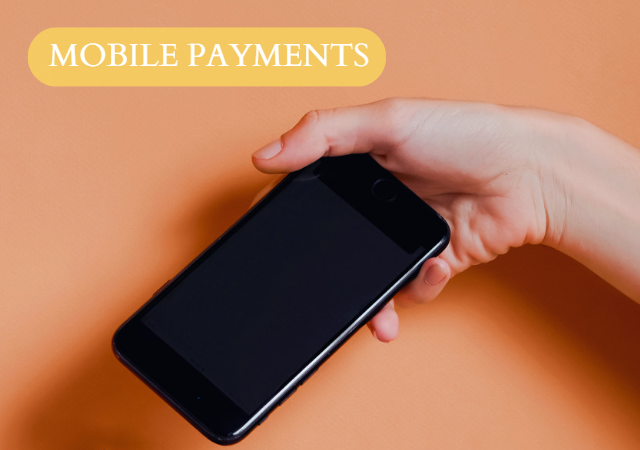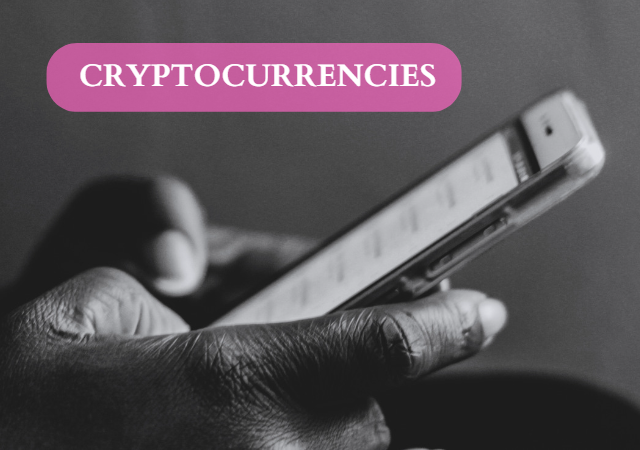The most secure digital payment methods for online transactions
Introduction
In today’s world, online transactions have become the norm. Whether you’re shopping online, paying bills, or transferring money, you’re likely to use digital payment methods to complete these transactions. However, with the rise of digital transactions, there has also been an increase in online fraud and cybercrime. Therefore, it is crucial to use the most secure digital payment methods to protect our financial information and prevent unauthorized access to our personal data.
In this article, we will explore the most secure digital payment methods for online transactions, including credit cards, digital wallets, mobile payments, and cryptocurrencies. We will discuss the security features of each payment method and the benefits they offer in terms of convenience, accessibility, and safety.
The most secure digital payment methods for online transactions
- Credit Cards

Credit cards have been around for a long time and remain one of the most popular payment methods for online transactions. They are easy to use and widely accepted by online merchants. Credit cards come with several security features, including:
- Chip and PIN technology: Most credit cards now come with a chip that stores the cardholder’s information and a PIN that is required to complete the transaction. This makes it harder for fraudsters to use stolen credit card information to make purchases.
- Fraud detection: Credit card companies use advanced algorithms to detect fraudulent transactions and alert the cardholder if any suspicious activity is detected.
- Zero-liability protection: Many credit cards come with zero-liability protection, which means that the cardholder is not responsible for any unauthorized transactions made on their account.
- Purchase protection: Some credit cards offer purchase protection, which covers the cardholder in case of a faulty product or if the merchant fails to deliver the goods or services as promised.
However, credit cards are not foolproof, and there are several risks associated with their use. For instance, if your credit card information is stolen, fraudsters can use it to make unauthorized purchases, which can result in financial losses and damage to your credit score. Therefore, it is crucial to follow best practices to protect your credit card information, such as:
- Use reputable websites: Only use trusted and secure websites for online transactions. Look for the padlock icon in the address bar, which indicates that the website is secure.
- Don’t save your credit card information: Avoid saving your credit card information on websites, as this increases the risk of your information being stolen.
- Check your statements regularly: Monitor your credit card statements regularly to detect any fraudulent activity and report it to your credit card company immediately.
- Set up alerts: Many credit card companies allow you to set up alerts for transactions above a certain amount or for transactions made outside of your usual spending pattern. This can help you detect fraudulent activity early and take appropriate action.
- Digital Wallets

Digital wallets, also known as e-wallets, are a newer payment method that has gained popularity in recent years. They allow users to store their credit card or bank account information securely and make payments online or in-person using their mobile device. Some of the most popular digital wallets include Apple Pay, Google Pay, and PayPal.
Digital wallets come with several security features, including:
- Encryption: Digital wallets use encryption to protect the user’s financial information and prevent unauthorized access.
- Two-factor authentication: Many digital wallets require two-factor authentication, such as a PIN or fingerprint, to complete a transaction, which adds an extra layer of security.
- Tokenization: Digital wallets use tokenization to replace the user’s credit card or bank account information with a unique token that cannot be used for other transactions. This reduces the risk of fraudsters stealing the user’s financial information.
- Purchase protection: Some digital wallets offer purchase protection, which covers the user in case of a faulty product or if the merchant fails to deliver the goods or services as promised.
Digital wallets offer several benefits over traditional payment methods. They are convenient, fast, and easy to use, as users can store their payment information in one place and make transactions with just a few taps on their mobile device. They are also widely accepted by online merchants, and some digital wallets offer rewards and discounts for using their service.
However, digital wallets are not immune to security risks. For instance, if a user’s mobile device is lost or stolen, fraudsters can gain access to their digital wallet and make unauthorized transactions. Therefore, it is crucial to follow best practices to protect your digital wallet information, such as:
- Use strong passwords: Create strong and unique passwords for your digital wallet account and change them regularly.
- Enable two-factor authentication: Enable two-factor authentication for your digital wallet account, which requires a PIN or fingerprint to complete a transaction.
- Only use trusted apps: Only download and use digital wallet apps from reputable sources, such as the App Store or Google Play Store.
- Use a screen lock: Use a screen lock, such as a PIN, password, or fingerprint, to prevent unauthorized access to your mobile device.
- Check your transactions regularly: Monitor your digital wallet transactions regularly to detect any fraudulent activity and report it to your digital wallet provider immediately.
- Mobile Payments

Mobile payments are another payment method that has gained popularity in recent years. They allow users to make payments using their mobile device at a point-of-sale terminal or online. Some of the most popular mobile payment services include Apple Pay, Google Pay, and Samsung Pay.
Mobile payments come with several security features, including:
- Encryption: Mobile payments use encryption to protect the user’s financial information and prevent unauthorized access.
- Two-factor authentication: Many mobile payment services require two-factor authentication, such as a PIN or fingerprint, to complete a transaction, which adds an extra layer of security.
- Tokenization: Mobile payments use tokenization to replace the user’s credit card or bank account information with a unique token that cannot be used for other transactions. This reduces the risk of fraudsters stealing the user’s financial information.
- Purchase protection: Some mobile payment services offer purchase protection, which covers the user in case of a faulty product or if the merchant fails to deliver the goods or services as promised.
Mobile payments offer several benefits over traditional payment methods. They are convenient, fast, and easy to use, as users can make payments with just a few taps on their mobile device. They are also widely accepted by merchants, and some mobile payment services offer rewards and discounts for using their service.
However, mobile payments are not without their risks. For instance, if a user’s mobile device is lost or stolen, fraudsters can gain access to their mobile payment service and make unauthorized transactions. Therefore, it is crucial to follow best practices to protect your mobile payment information, such as:
- Use strong passwords: Create strong and unique passwords for your mobile payment service account and change them regularly.
- Enable two-factor authentication: Enable two-factor authentication for your mobile payment service account, which requires a PIN or fingerprint to complete a transaction.
- Only use trusted apps: Only download and use mobile payment apps from reputable sources, such as the App Store or Google Play Store.
- Use a screen lock: Use a screen lock, such as a PIN, password, or fingerprint, to prevent unauthorized access to your mobile device.
- Check your transactions regularly: Monitor your mobile payment transactions regularly to detect any fraudulent activity and report it to your mobile payment service provider immediately.
- Cryptocurrencies

Cryptocurrencies, such as Bitcoin and Ethereum, are a decentralized payment method that uses blockchain technology to facilitate transactions. They are not widely accepted by merchants, but they offer several benefits in terms of security and anonymity.
Cryptocurrencies come with several security features, including:
- Encryption: Cryptocurrencies use encryption to protect the user’s financial information and prevent unauthorized access.
- Decentralization: Cryptocurrencies are decentralized, meaning they are not controlled by a central authority, such as a bank or government. This makes it difficult for fraudsters to manipulate the system.
- Anonymity: Cryptocurrencies offer a high level of anonymity, as users can make transactions without revealing their identity. However, this anonymity can also make it difficult to trace transactions in case of fraud.
- Immutability: Once a transaction is recorded on the blockchain, it cannot be altered or deleted, providing a high level of security and transparency.
Cryptocurrencies can be stored in a digital wallet, and users can make transactions using their wallet address. However, cryptocurrencies also come with some risks, such as:
- Volatility: Cryptocurrencies are highly volatile, meaning their value can fluctuate rapidly, which can lead to financial losses.
- Lack of regulation: Cryptocurrencies are not regulated by governments or financial institutions, which can make them vulnerable to fraud and scams.
- Complexity: Cryptocurrencies can be complex to use, and users need to have a good understanding of blockchain technology to use them safely and securely.
To protect your cryptocurrency transactions, it is crucial to follow best practices, such as:
- Use a hardware wallet: Hardware wallets offer a high level of security by storing your cryptocurrency offline, making it difficult for fraudsters to access your funds.
- Use strong passwords: Create strong and unique passwords for your cryptocurrency wallet account and change them regularly.
- Keep your private keys secure: Private keys are used to access your cryptocurrency wallet, and it is essential to keep them secure and not share them with anyone.
- Only use reputable exchanges: Only use reputable cryptocurrency exchanges to buy and sell cryptocurrencies, and research the exchange’s security measures before using their service.
Conclusion
Digital payment methods offer several benefits, such as convenience, speed, and ease of use. However, they also come with security risks, and it is crucial to follow best practices to protect your financial information and prevent unauthorized access.
The most secure digital payment methods for online transactions include credit cards, digital wallets, mobile payments, and cryptocurrencies. Each payment method has its own security features and risks, and it is essential to choose the right payment method based on your needs and preferences.
By following best practices, such as using strong passwords, enabling two-factor authentication, and monitoring your transactions regularly, you can protect your financial information and make online transactions with confidence.

My name is Rohit Vagh and I’m a content writer specializing in fashion and lifestyle. I have three years of experience in this field and have written various articles. My writing style is creative and engaging, and I strive to create content that resonates with my readers. I have a deep passion for fashion and am constantly researching the latest trends and styles to make sure my readers are up to date. I’m excited to continue my career in blogging, and I’m always looking for new opportunities in the fashion and lifestyle space.





